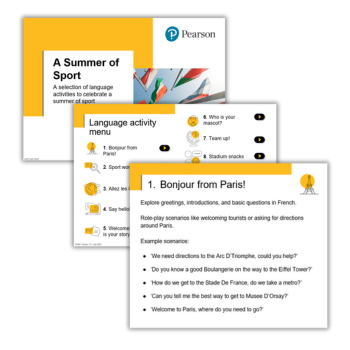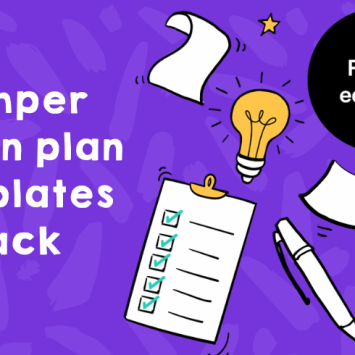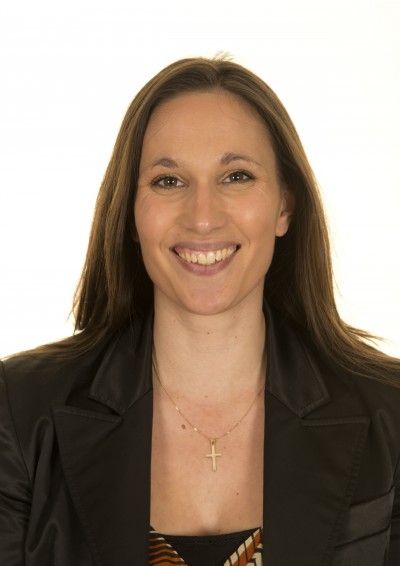KS4 MFL Lesson Plan – A Wedding-Themed Lesson Is A Fun Way To Get Students Saying ‘I Do’ To Grammar

The challenge to make translation more interesting and varied can sometimes leave us searching for inspiration, so why not spice up schemes of work with a wedding themed lesson?

Every teacher has days where the textbooks and websites are not as enthralling as they need to be to get the best out of pupils’ learning, and sometimes the routine is in need of some spice. In this lesson plan pupils have to help make the happy couple’s wedding day extra special by using their language skills to translate well wishes from abroad from long lost friends and reminisce about days gone by through helping the best man write prompts for his speech; before finally writing their review of the big day on a wedding cake template.
The new GCSE requires teachers to prepare students for multiple linguistic demands, moving away from supported learning required for controlled assessments at home and at school towards ensuring that we help pupils to develop greater independent language skills and enabling pupils to be exam ready. As the topics of the new GCSE have widened so must our approach to exposing new and varied vocabulary, so teaching this kind of lesson whilst reinforcing the required grammar elements allows scope for interesting vocabulary outside of the normal realms that our textbooks can offer us.
The new speaking GCSE exam requires pupils to respond to photographic images and respond with prompted answers so the idea of creating lessons where pupils can practise composing questions or understanding question formation are helpful to this part of the examination. In this lesson plan, pupils are offered this chance right from the get-go.
Starter
Any questions? Pupils are presented with a photo of a wedding couple and asked to write questions for the bride and groom, based on their ability. Support can be from as little as question prompts, to whole class input in the form of a spidergram. An alternative activity would be to have students help the ‘wedding planner’ order a set of pre-written questions for the bride and groom; sorting them into past, present and future tenses.
Main Activities
1. Best man’s speech Show a photo of ‘the best man’, and explain to students that are going to create a storyboard template for his speech based on him having found the ‘secret diary’ of the groom!
The template should allow learners to talk about activities that the groom used to do in his past. This activity allows scope for adaptation based on how secure grammar is and what tense teachers want to practise.
For example, for the imperfect and present tenses, pupils could tell of what the groom used to be like and what he is like now.
The final storyboard could use the future tense to say what the best man thinks the groom might write in his diary in years to come.
2. Messages from abroad In the next part of the wedding, the father of the bride needs help translating messages from well-wishers who would love to be there, but are based abroad. Again, this activity can be adjusted to suit how good at translating the pupils are, and which tense teachers want to practise.
For weaker students the Father of the bride could have already part translated some of the messages, for more able students the messages could contain memories from well-wisher’s from the past.
Summary
Cutting the cake Pupils draw or are presented with an outline of a three-tier wedding cake, which they can use to review the lesson in three parts. In the top tier, they write things they have strived to learn in the lesson. The middle tier is for reflection on the achievement and progress they feel they have made; this could include new vocabulary and questions they have learnt. The final tier is a space for future targets, where students can write about what they hope to reinforce in upcoming lessons, and any areas of grammar that they feel that they need to work on as a result of the activities in this one. As a whole, this reflective activity also allows pupils to consider a current assessment of their skills in questions, translation, and creative writing.
Home learning Pupils could write a blog for the bride, describing her big day – who came and how it went – and what activities she and her husband are planning for the future. Alternatively, they could be presented with extended messages to translate or simply create their own wish from abroad to the happy couple.
Following on from this lesson pupils could create a personalised diary/blog entry, reflecting on their own lives, contrasting what they used to do at primary school, with being a teenager now.
Additional resources Look out for MFL Teachmeets, as they offer a wealth of local support, good networking opportunities and great inspiration, and check out headoflanguages.co.uk, a brilliant website full of ideas from other MFL teachers.
Clara Ampah-Korsah has been a languages teacher for 11 years. She is currently head of MFL at Westfield Academy, and part of the CPD team.











